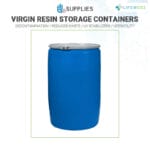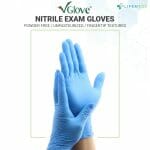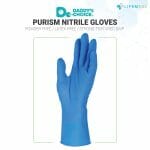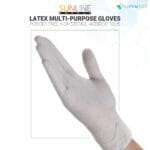What are Elastomeric Respirators?
Elastomeric respirators are reusable, tight-fitting personal protective equipment (PPE) designed to provide reliable respiratory protection against airborne contaminants such as dust, gases, fumes, and pathogens. These respirators feature a durable, flexible facepiece made from elastomeric materials like silicone or rubber, which allows them to be cleaned, disinfected, and reused. Elastomeric respirators are often equipped with replaceable filter cartridges or discs that capture hazardous particles from the air. They are commonly used in industrial, healthcare, and emergency response settings where long-term respiratory protection is essential.
How Do Elastomeric Respirators Work?
Elastomeric respirators work by forming a tight seal around the wearer’s nose and mouth, ensuring that all inhaled air passes through the filters. These respirators are equipped with either particulate or gas/vapor filters that trap harmful particles or neutralize gases, depending on the specific environment. The filters are usually removable and replaceable, allowing the respirator to be reused over extended periods while maintaining its filtration efficiency. The facepiece is made from a soft, flexible material that can be adjusted to ensure a secure and comfortable fit, preventing air leakage.
There are two main types of elastomeric respirators: half-face and full-face. Half-face respirators cover the nose and mouth, while full-face respirators provide additional protection for the eyes and face.
Types of Elastomeric Respirators
- Half-Face Respirators: These respirators cover the nose and mouth and are often used in environments where inhalation of hazardous particles is a risk. They are commonly used in industries such as construction, painting, and chemical handling.
- Full-Face Respirators: Full-face respirators provide comprehensive protection for the respiratory system and the eyes, making them suitable for highly hazardous environments where both respiratory and eye protection are needed.
- P100 or HEPA Filters: Elastomeric respirators often use P100 or HEPA filters, which provide maximum filtration efficiency by trapping at least 99.97% of airborne particles, including very fine dust, fumes, and infectious pathogens.
Applications of Elastomeric Respirators in the PPE Industry
Elastomeric respirators are widely used in industries such as healthcare, chemical processing, construction, and firefighting. In healthcare settings, elastomeric respirators offer an alternative to disposable N95 masks during shortages, as they provide similar levels of protection but are reusable after proper cleaning and disinfection.
In industrial settings, these respirators are essential for protecting workers from inhaling hazardous chemicals, dust, and fumes, particularly during tasks such as sanding, welding, or handling hazardous materials. Full-face elastomeric respirators are commonly used in chemical plants and emergency response situations where both respiratory and eye protection are critical.
Conclusion
Elastomeric respirators are a durable, reusable form of respiratory protection that offer a high level of defense against airborne contaminants in a wide range of environments. With their replaceable filters and customizable fit, they provide long-term protection and cost-efficiency for industries that require consistent use of respiratory PPE. Whether used in healthcare, construction, or industrial settings, elastomeric respirators are a reliable option for safeguarding workers’ respiratory health.
« Back to Glossary Index

















